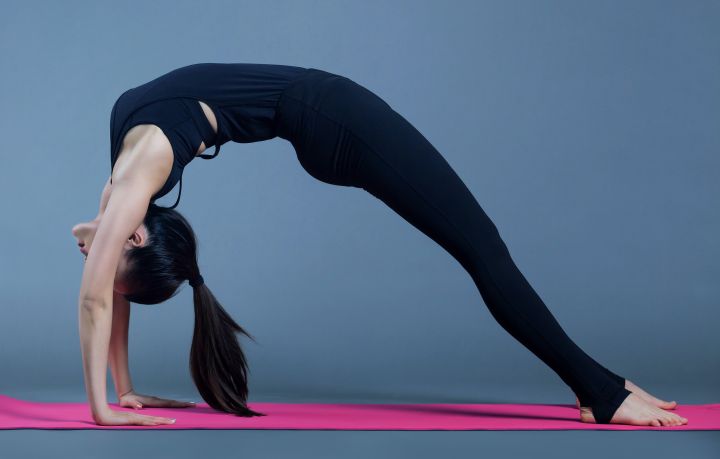In the ashtanga vinyasa practice we start with a bhajana and then a series of standing asanas. Today we are talking about two standing forward bends.

Anatomy
What is the purpose of forward bending? When we fold forward, we bend at the hips and spine. This has the effect of lengthening the back of the body and shortening the tissues in the front of the body.
In padangusthasana and pada hastasana, we spread our feet hip-width apart, first grasping the toes and then placing our hands under the feet.

In this most basic of forward flexions, i often refer to full forward flexion as hip flexion and spinal flexion. Once we reach the end of hip flexion, the spine continues to flex, pulling the torso towards the legs.

Here we begin to develop a sense of being in between engagement and relaxation. In order to fold forward, our hamstrings contract centrifugally and once in forward bend, they can be lengthened by using different techniques to relax them. You can even lean forward slightly on your toes to vary the pressure exerted on the hamstrings.
How you work the upper body is also important. There are at least two patterns for the upper body. The first is the lengthening of the spine. Use the resistance of grasping the toes in padangusthasana and placing the hands under the feet in padahastasana to activate our front serratus and latissimus dorsi muscles and to guide the scapulae into extension. Simply put, have your elbows pointing behind you while stretching your scapulae.

Purpose
These two basic standing forward bends begin to work with our internal balance. Initially you may find that these postures challenge your proprioception when you fold forward without placing your hands on the floor for balance.

The main way to adjust in this aspect of balancing proprioception is to move our pelvis relative to the base position. For beginners with poor balance, their pelvis will usually be slightly behind an imaginary line.
There is another factor, which is the tension of the hamstrings. If your hamstrings are really tight, getting your pelvis closer to your toes may be too painful. This is another reason for beginners to put their pelvis on their heels.

Techniques and limitations
What can hinder our forward flexion? You might think of the hamstrings. Of course, tight hamstrings can prevent us from relaxing when standing in forward flexion. But in reality, tension anywhere at the back of the body can affect forward bending. You may experience tension in the hamstrings, calf muscles, gluteals and erector spinae muscles. You may even notice tension in the soles of your feet and achilles tendons as well as in the back of your head and neck!

So what to do? How do i practice?
Putting pressure on the hamstrings during standing forward flexion is the main concern. Just as important as creating length in the hamstrings, how we create this length is equally important. How we take the stress off the hamstrings becomes an important part of this. Should i bend my knees?

It is recommended to work in a way that keeps the pressure on the whole hamstring rather than having the pressure concentrated more on one attachment or end of the hamstring. Bend your knees as you enter the forward bend, then straighten your legs once you get there. In padangusthasana you will grasp the big toe with your fingers. In the second variation, the palms of your hands go up and you bring your hands under your feet. The second variation is more challenging as the hamstrings need to be longer to keep the hands under the feet.

Don't start all your work with your arms. Instead, use the arms to increase the length of the spine. By relaxing the abdominals (the tighter the hamstrings, the more difficult they are) you will be forced to use deeper muscles.
When the abdomen contracts, it flexes the spine. Of course, some flexion is possible, but if we also try to lengthen the spine, the tension in the abdominals will actually work against it as it tries to pull the rib cage towards the pubic bone. As the abdomen relaxes more and the psoas is activated, hip flexion becomes the main action that occurs.

What if my hands can't reach the ground? You can either place yoga blocks in front of you or bend your knees, but use about 25% of your strength to straighten them. This will help to gradually lengthen the hamstrings as you practice.

Once you are in forward bend, notice where your weight is. Are you resting your weight on your heels and finally relaxing your head and neck.

